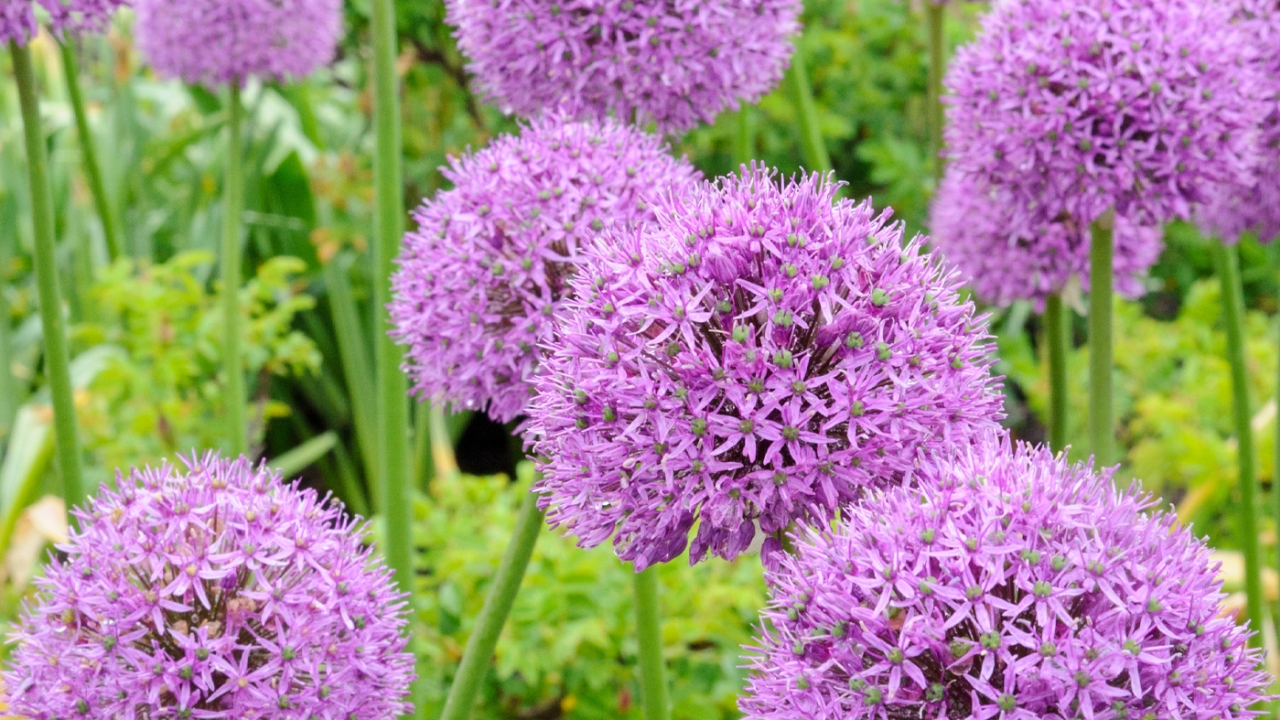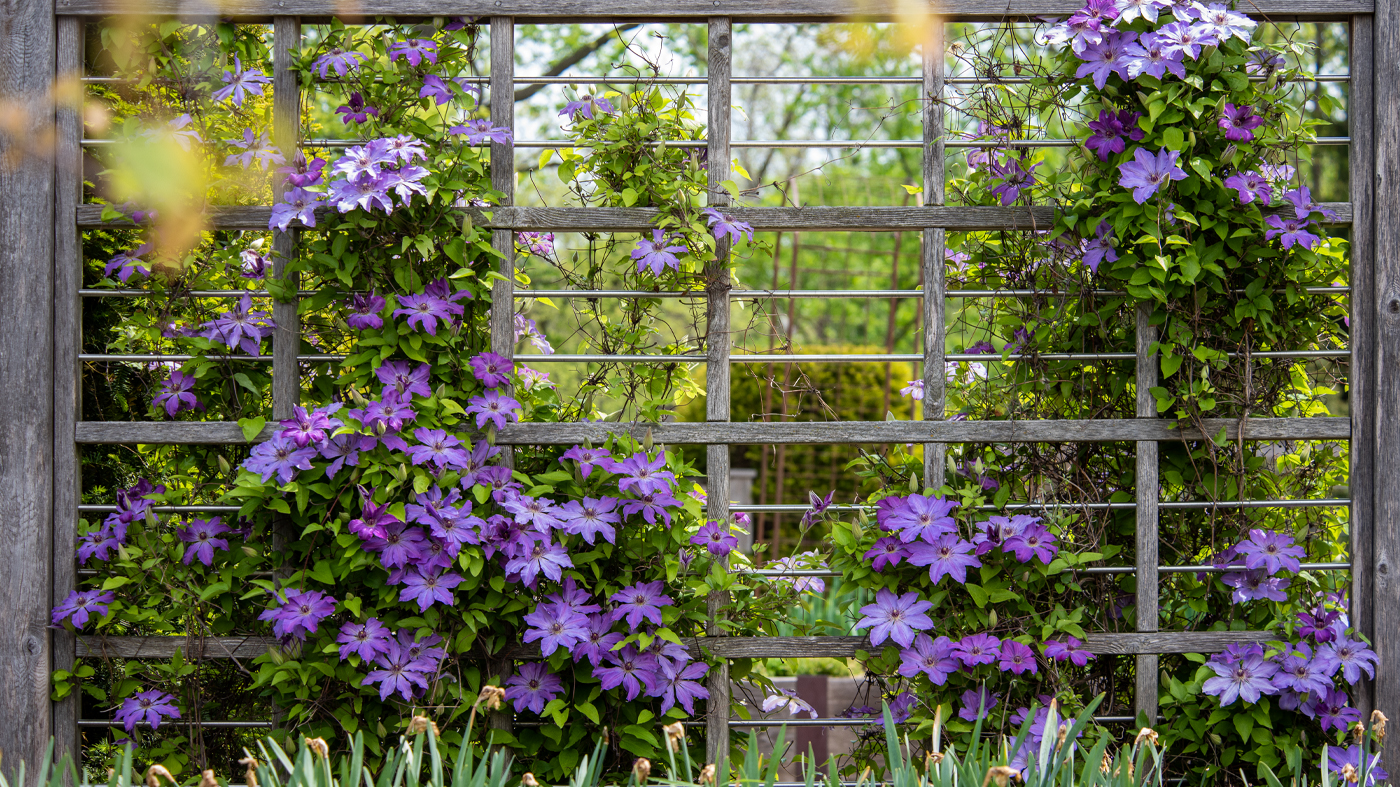

Clematis
Clematis spp.
The beautiful clematis is like a flowering star in the summer border. While other perennials offer their charms in attractive mounds or vertical statements, the clematis climbs above the rest, twisting and twirling before opening its blossoms in shapes ranging from nodding bells to frilly double stars. A few types of clematis have tubular or clustered flowers, but the showiest summer displays belong to the large-flowered hybrids.

At the Chicago Botanic Garden, a wonderful selection of clematis can be found in many gardens, growing up brick walls and balustrades, pergolas and trellises. In some cases, as in the English Walled Garden, several varieties grow together, creating a multiple color and bloom effect. In the Landscape Gardens, four kinds of clematis are planted on the wooden tuteurs in the traditional border, among them the violet purple 'Etoile Violette' and the wine red 'Madame Julia Correvon'.
Most clematis varieties require a support for their best display. Growth is rapid in late spring and early summer, and gardeners must be diligent about guiding these climbing vines to their supports, which might even be a neighboring tree or shrub. A few types prefer to sprawl on the ground rather than climb, among them the 5-foot, blue, summer-flowering Clematis xdurandii and the 2-foot shrubby Clematis heracleifolia,which blooms from July to October with highly fragrant, blue to lavender, hyacinthlike flowers.
When selecting a clematis, pick one with multiple stems. Plant the crowns 1 to 2 inches below soil level in a cool, organically amended soil with an even supply of moisture. In the event of damage to above-ground growth, the protected crown can send up more shoots. Mulch the planting area and, if necessary, surround the small vine with a chicken wire cage to protect against rabbits and lawn mowers. As the vine grows, it requires sunny conditions for best flowering.
As you visit the Garden this summer, take note of the many clematis varieties. The Garden's Plant Evaluation Program can help you choose one for your garden. More than 60 different clematis varieties were studied over a five-year period, with results published in Plant Evaluation Notes #10. Then next spring plant a star in your garden.

